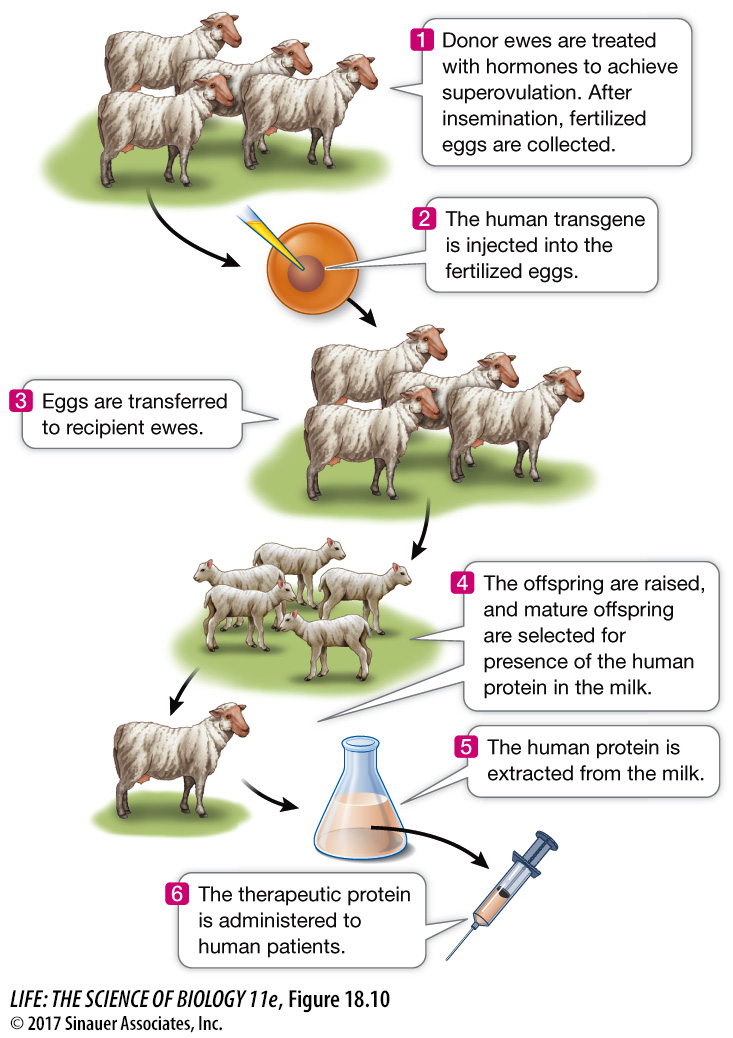Medically useful proteins can be made using biotechnology
Biotechnology produces many medically useful products (Table 18.1), and more are in various stages of development. A good illustration of a medical application of biotechnology is the manufacture of tissue plasminogen activator (TPA) discussed in the opening of this chapter. As noted there, TPA is a human protein involved in hydrolysis of blood clots, and can be used to remove clots that block blood flow in a stroke.
| Product | Use |
|---|---|
| Colony- |
Stimulates production of white blood cells in patients with cancer and AIDS |
| Erythropoietin | Prevents anemia in patients undergoing kidney dialysis and cancer therapy |
| Factor VIII | Replaces clotting factor missing in patients with hemophilia A |
| Growth hormone | Replaces missing hormone in people of short stature |
| Insulin | Stimulates glucose uptake from blood in people with insulin- |
| Platelet- |
Stimulates wound healing |
| Tissue plasminogen activator | Dissolves blood clots after heart attacks and strokes |
| Vaccine proteins: Hepatitis B, herpes, influenza, Lyme disease, meningitis, pertussis, etc. | Prevent and treat infectious diseases |
392
To make TPA in amounts needed for clinical use, scientists first isolated the TPA gene by taking the mRNA for TPA and making a cDNA copy in the lab. The cDNA was then inserted into an expression vector and used to transform mammalian cells (Investigating Life: Producing TPA). The transgenic cells made the protein in quantity, and it soon became available commercially. As you saw at the start of the chapter, the drug has been a success in treating strokes.
Another way of making medically useful products in large amounts is pharming: the production of pharmaceuticals in farm animals or plants. For example, a gene encoding a useful protein might be placed next to the promoter of the gene that encodes lactoglobulin, an abundant milk protein. Transgenic animals carrying this recombinant DNA will secrete large amounts of the foreign protein into their milk. These natural “bioreactors” can produce abundant supplies of the protein, which can be separated easily from the other components of the milk (Figure 18.10).

Question
Q: A drug that is an enzyme from bacteria has been developed to treat the genetic disorder Gaucher’s disease, using carrot cells in tissue culture. The targeted enzyme functions inside the lysosome. In addition to inserting the gene for the enzyme into carrot cells, what other DNA sequences need to be inserted into the plant cells so that the enzyme will be functional in humans?
DNA sequences that encode posttranslational modifications of the enzyme would be necessary, specifically the signal sequence that is involved in targeting the enzyme to lysosomes.